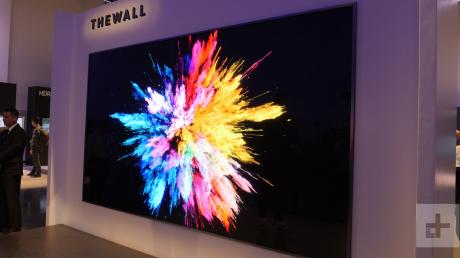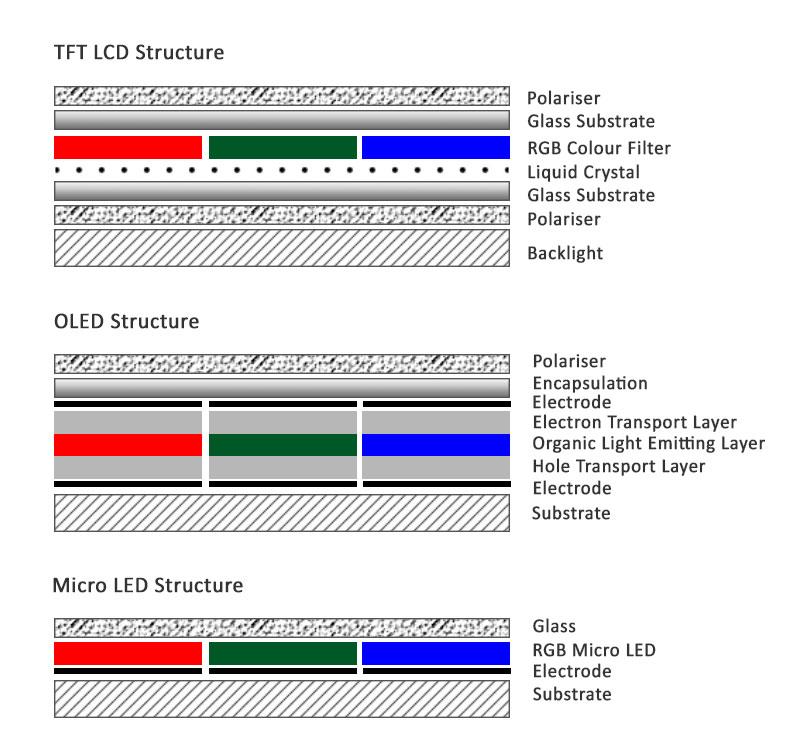OLED (or Organic Light Emitting Diode) display technology is currently the display of choice for the consumer smartphone market and it's not surprising as the outstanding colour and clarity of the image, true all round viewing angles and complete black screen in the off state make the end user experience second to none. But what is the next generation MicroLED and what advantages will this bring to the world of smart devices?
What is an OLED display?
OLED technology contrasts starkly with LCD. Unlike other screen technologies, OLED displays use organic compounds that emit light when an electric current is passed through them. Display manufacturers use this organic material and place it between two electrodes, which provide the current, one of which is transparent so the light generated can escape and be viewed. It is classed as an emissive display as it requires no backlight.

What is a MicroLED Display
Like OLED, MicroLED is a self-emitting display constructed from Light Emitting Diodes producing their own light, but the difference is they are inorganic, such as using a Gallium Nitride (GaN) material. This means they do not need an encapsulation layer, possibly making the display panels thinner.
The MicroLED components themselves are impossibly small with each one measuring less than 100µm – which can be thinner than a human hair!

Benefits and Negatives
Benefits of using an OLED display:
- No backlight means more power efficiency
- Increased battery life for handheld devices
- Very slim profile display
- Bright, vibrant colours
- All round viewing angles
- Displays looks pure black as can be switched off completely
Negatives of using an OLED display:
- Problem of colour burn-in
- Short lifetime
- OLED panels are generally fragile (the organic material suffers from oxidation in vulnerable environments (where water exists for example)
- Production methods not as robust as LCD modules
- They are expensive to produce compared to LCD modules
Benefits of using a MicroLED display:
All the benefits are shared with the OLED display with the added benefits:
- No encapsulation layer is needed leading to even thinner display modules
- Improved brightness to power ratio, therefore able to achieve the same level of luminance as an OLED with less power
- Brightness of >4,000 nits
- Infinity contrast and 180° viewing angle
- No fading and 100,000+ hours lifetime
- Higher resolutions in smaller form factors
- Extremely high response time - measures in nanoseconds (whereas OLED are measured in microseconds)
Negatives of using MicroLED display:
- At least 3 times more expensive than an OLED display
- Not many companies have invested in this technology so far because of cost
- Difficult to manufacture due to the MicroLED’s small
size
Although Micro LED displays are a very exciting prospect for the future, it may still be a little while before the manufacturing infrastructure is in place to produce in mass volumes and at a cost acceptable to the market. For sure this will be adopted first by the consumer market, but as with all display trends, we will eventually see this trickle down to industrial applications wanting to super-style their products.
Display structures: LCD, OLED and MicroLED

Display choice really does depend on your application, end user and environment. Before you make your choice, why not speak with us and we will be happy to talk you through your options.


